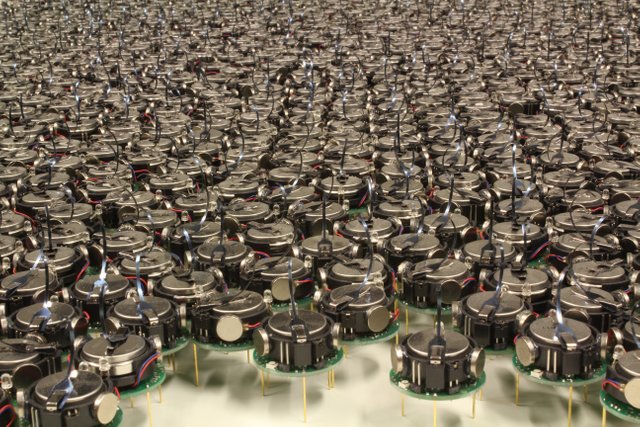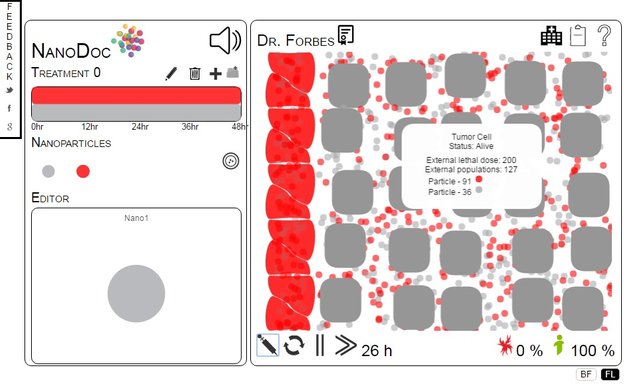Fighting Cancer with Swarming Nanobots and How you can Help

Research into robotic swarms has been increasing over the years to use on tasks including off-world mining, foraging, increasing agricultural yields and military applications. But now there is also work, by Sabine Hauert at the University of Bristol, to create injectible nanobots with the goal to combat cancer.
We've all seen swarms naturally in fish, birds and insects where large groups manage to stay clumped together, often as protection from predators, without getting separated or interfering with each other. Getting robots to mimic swarm behavior follow few basic rules including:
- Don't get too close to another robot
- Return if too far away
- Keep going forward
- Go only in the same direction as your neighbor
To allow engineers to actually control the robots, an additional rule is included such as to follow a light source or an applied magnetic field.


Simulations
With nano-scale robots not being able to be controlled in traditional ways like a remote control, they are instead 'programmed' by design changes including shape, size, coatings, electrical charges and materials they are made from.
Often when dealing with such small objects, it's hard to predict how they will act, so Dr. Hauert has simulated many different designs to see how far they are able to penetrate, stick to and kill cancer cells. But even they are able to think of and run through so many of these, leading her to create a crowdsourced game called Nanodoc where anyone is able to create, edit and simulated nanoparticles to be injected with the goal to kill increasing numbers of cancer cells. In her TED talk she brought up how there were no requirements on how to 'win the game.'
Her team has also been using kilobots to model cancer cells (shown as red,) 'injected nanobots' (in green) with those that bonded to the cancer cells (in blue) to be able to watch, study, and gain better understanding of their behaviors. They also do some testing on the smaller scale through the microscope, but these robots help provide insight while being reusable and cheaper.
They found that some solutions of the better solutions weren't thought of by the research team itself, but instead by crowdsources players, where two different nanoparticles were used together to fight the cancer. Anybody can play with creating and simulating their own ideas by going to Nanodoc.org and using a Google, Twitter or Facebook account to log in.


How You Can Help
If you want to help out, just play Nanodoc, and run simulations with your own ideas!


Don't Miss the Show! Follow the Steemit Talk Podcast (STP) Account
New STP Website!!
Are you new to Steemit and Looking for Answers? - Try https://www.steemithelp.net.


Image Sources:
Bird Flock
Kilobot Robot Swarm
This post has been ranked within the top 25 most undervalued posts in the second half of Feb 12. We estimate that this post is undervalued by $7.21 as compared to a scenario in which every voter had an equal say.
See the full rankings and details in The Daily Tribune: Feb 12 - Part II. You can also read about some of our methodology, data analysis and technical details in our initial post.
If you are the author and would prefer not to receive these comments, simply reply "Stop" to this comment.